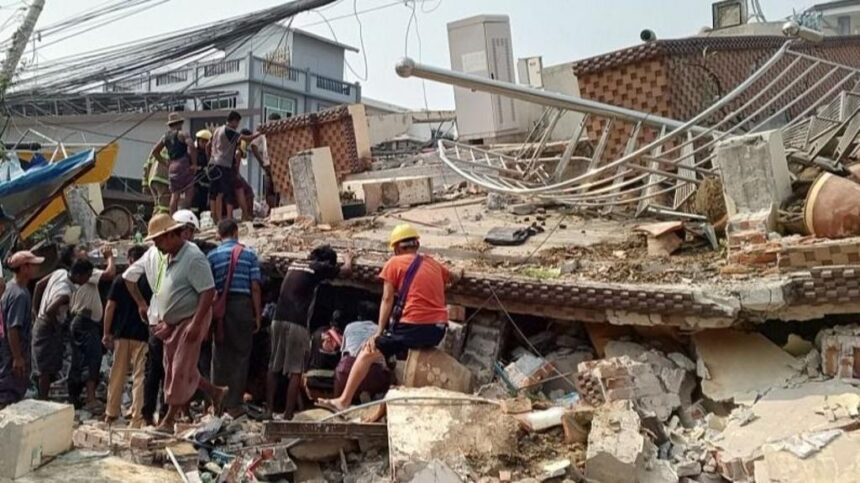The death toll from the devastating 7.7-magnitude earthquake that struck near Mandalay, Myanmar, has soared past 1,000, making it the deadliest quake to hit the country in more than a century. The US Geological Survey has warned that the number of casualties could rise significantly, possibly exceeding 10,000 as rescue efforts continue.
The powerful quake sent shockwaves through neighboring Thailand, where it caused the collapse of several buildings in Bangkok, including a high-rise under construction. At least 10 people have been confirmed dead in the Thai capital, and authorities are racing against time to rescue more than 100 workers feared trapped under the rubble.
Myanmar, already grappling with the aftermath of a 2021 military coup and ongoing civil conflict, is struggling to mount a coordinated response. Weak infrastructure, damaged roads, and communication blackouts are hampering efforts to reach affected communities, leaving many isolated and vulnerable.
International aid has started pouring into Myanmar, with China and India among the first to respond. A Chinese rescue team was the earliest to arrive on Saturday morning, followed by Indian rescue and medical teams equipped with urgent humanitarian supplies. Both nations have pledged to assist Myanmar in managing the crisis.
The Red Cross has expressed deep concern over the potential humanitarian impact, warning that thousands of families may be displaced or cut off from essential services. Emergency shelters are being set up, but the scale of the devastation has overwhelmed local resources, and many survivors are left without food, clean water, or medical care.
In Bangkok, rescue workers are meticulously sifting through debris from the collapsed high-rise, as distraught families wait anxiously for news of their loved ones. The Thai government has deployed additional emergency teams to support ongoing rescue operations and urged citizens to stay away from affected areas.
Authorities in both countries are coordinating with international agencies to streamline rescue missions and provide medical assistance. However, the dire situation in Myanmar has raised concerns among aid organizations about the long-term challenges of recovery and rehabilitation.
As rescue efforts continue, the world watches with bated breath, hoping for more survivors to be pulled from the wreckage. The earthquake has not only shaken the ground but also tested the resilience and solidarity of the affected communities and their neighbors.







